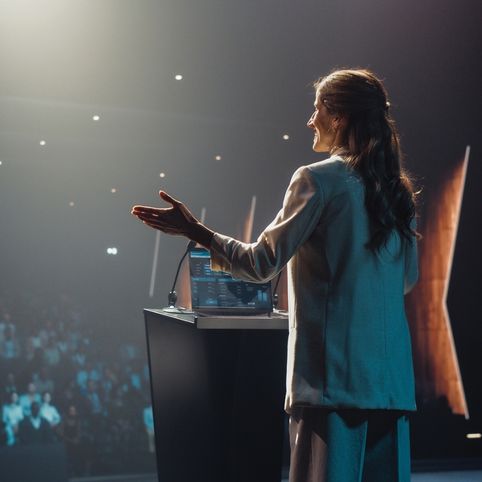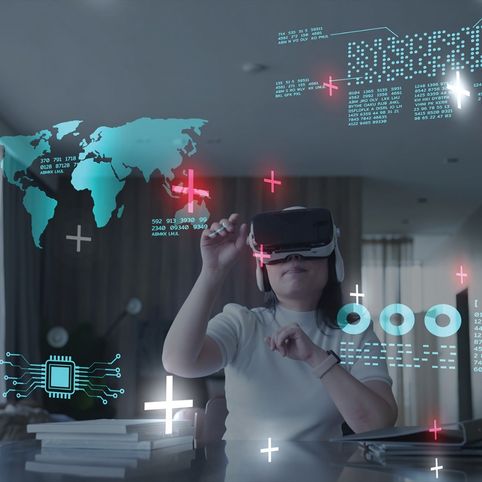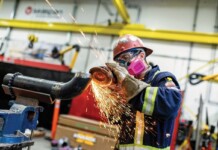
Planning a corporate event is no small act. Numbers shift, speakers drop out and formats need to balance value with engagement. But new technologies are making the process smoother for organizers and more rewarding for participants. Features like personalized agendas, real-time updates and smarter networking tools are helping planners stay agile while giving attendees a more engaging and customized experience. We explore some of the tools reshaping the way corporate events come together.
Engagement Tracking

How it works: Event-specific apps, smart badges and analytics platforms track participant behaviour including sessions attended, interactions made and feedback shared. Organizers can use this data to evaluate engagement, see what worked, see what didn’t and refine future events.
Why it matters: Tracking engagement provides concrete evidence of an event’s impact. It helps organizers measure ROI, see which activities drove the most collaboration and make informed improvements that increase both productivity and satisfaction.
What it looks like:
Event-specific apps
An attendee opens the event app on their phone to check which workshop is next. During a keynote, they use it to send in a question and vote in a live poll. Later, they message a fellow attendee to set up a coffee chat.
Smart badges
As a participant walks into a breakout session, their badge, programmed with a QR/NFC chip, automatically checks them in. Later, while chatting at lunch, their badge swaps contact info with a colleague for effortless follow-up.
Analytics dashboards
After the retreat, the event organizers use data collected from apps, badges and surveys to see which sessions were the most popular, where participants gathered most often and tally engagement scores.
Smart Scheduling

How it works: Smart scheduling tools allow attendees to select workshops, networking sessions and activities that align with their interests. Algorithms can suggest connections, recommend sessions or adjust agendas in real time based on preferences.
Why it matters: Personalization boosts engagement and ensures attendees get the most value for their time, creating more meaningful connections and long-term impact.
What it looks like:
Create your agenda
An event attendee scrolls through the available workshops and selects the ones they are interested in, automatically building a personalized agenda. The platform then pushes reminders when a chosen session is about to begin.
Connection suggestions
A smart app recommends a colleague in another department who signed up for the same leadership workshop or matches two attendees who both indicated an interest in sustainability initiatives.
Real-time updates
A desired session is full, so a smart app suggests a similar alternative for the attendee. Bad weather cancels an outdoor team activity, the app instantly swaps to an indoor option on everyone’s schedule.
Immersive Tech: VR & AR

How it works: Virtual and augmented reality platforms turn abstract ideas into 3D experiences. VR headsets immerse participants in simulated environments, while AR apps layer interactive data and visuals onto the real world. Together, they create collaboration that is more interactive than traditional slides or flip charts.
Why it matters: Immersive tools increase engagement, retention and inclusion. Allowing a team to “experience” a strategy, product or process first-hand in a virtual space. This makes discussions more concrete and accelerates problem-solving, whether participants are in the room or joining remotely.
What it looks like:
VR
A design team “walks through” a virtual store layout, exploring every aisle before it’s built. A product team rotates and tests a prototype in 3D. A marketing group steps into a simulated customer journey, visualizing campaigns together.
AR
With a phone, tablet or AR glasses, participants see charts, graphs or any data concepts projected on a wall or instructions overlaid on real objects, turning workshops into interactive, hands-on sessions.
AI-Designed Agendas

How it works: Unlike smart scheduling apps, which rely on attendees selecting their preferred sessions, AI-powered agendas act like a personal assistant. They analyze attendee profiles, past meeting outcomes and organizational goals to design personalized schedules for each person. AI can suggest sessions, networking matches and optimal breaks, and it adapts in real time if plans change.
Why it matters: Traditional planning can sometimes overload participants with information and interaction. AI can help strike the right balance between work, collaboration and downtime, creating more productive sessions and less meeting fatigue.
What it looks like:
Attendees receive a fully personalized agenda crafted by AI, highlighting sessions and networking opportunities that best match their interests and corporate objectives. Managers are guided toward strategic workshops, while creative teams see innovation-focused sessions. After the event, organizers review participation and engagement data, which the AI uses to improve future agendas and maximize outcomes.
Photos: Getty Images























